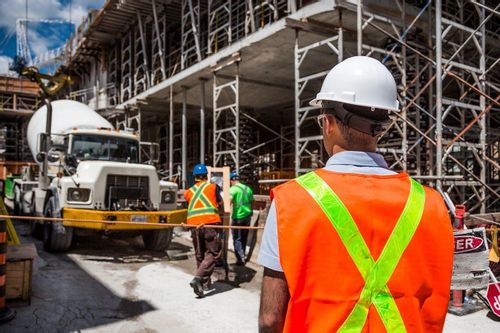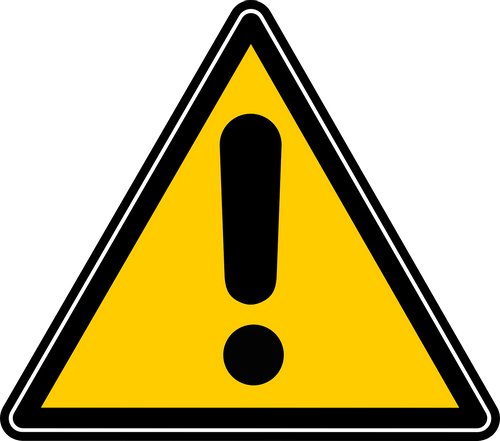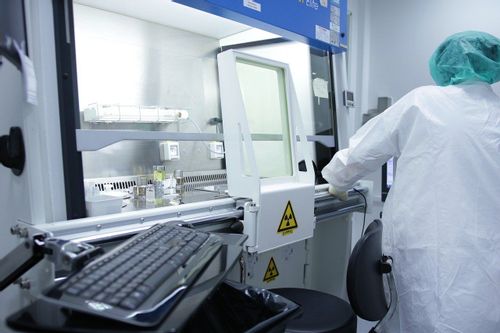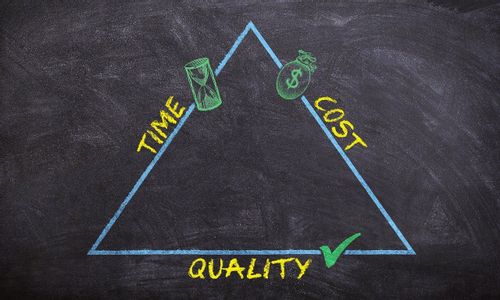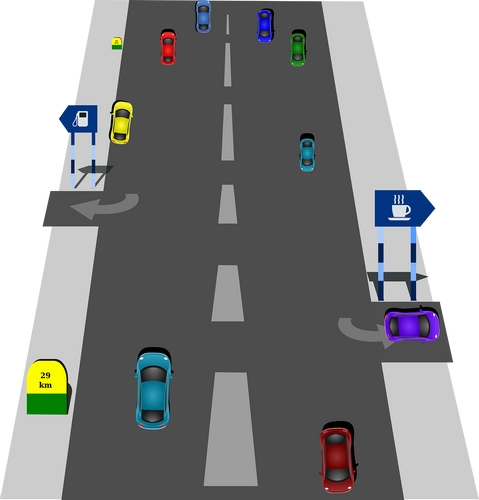Standards Packages
iTeh together with SIST has developed and compiled a comprehensive collection of standard packages to support your standard requirements. Our packages cover an array of content that includes quality management, risk management, road vehicles, machine safety, and much more. With over 200 packages to choose from, you are sure to find a collection to suit your standard needs.
Latest Standards
This document presents the framework and general principles for maintenance and repair of all kinds of existing concrete structures — un-reinforced and reinforced concrete, prestressed concrete and steel-concrete composite structures, or their structural members. In this document, deterioration is clearly distinguished from damage occurring in a short period and not developing over subsequent time, such as cracking and scaling due to earthquakes or impact loading, etc. Deterioration is mainly dealt with as a target for the maintenance activities. This document also provides the basic concept of repair carried out to restore structural performance of existing structures. This document does not cover those aspects of maintenance and repair that are related to serviceability and aesthetics without direct impact on durability and service life, e.g. cleaning of drains, removal of vegetation, refreshment of paint, etc. This document also does not cover repair of defects during execution of new structures.
- Standard19 pagesEnglish languagesale 15% off
- Draft19 pagesEnglish languagesale 15% off
- Draft19 pagesEnglish languagesale 15% off
This document specifies requirements for hoses and hose assemblies made of rubber and hose fittings made of metal, which are designed to convey saturated steam and hot water condensate. This document applies to the following two types of hoses and hose assemblies: — low pressure, with a maximum working pressure of 0,6 MPa (6 bar); — high pressure, with a maximum working pressure of 1,8 MPa (18 bar). Each type is divided into two classes, having either an oil resistant or non-oil resistant cover.
- Standard11 pagesEnglish languagesale 15% off
- Standard11 pagesFrench languagesale 15% off
- Draft11 pagesEnglish languagesale 15% off
- Draft11 pagesEnglish languagesale 15% off
This part of ISO 21068 gives definitions and specifies techniques for the preparation of samples for the chemical analysis of silicon-carbide-containing raw materials and refractory products including:
a) SiC raw materials;
b) graphite brick containing silicon carbide;
c) silicon carbide brick (includes the bricks containing silicon nitride, silicon oxynitride, sialon);
d) refractories containing carbon and/or silicon carbide mixed with clay;
e) refractories containing carbon and/or silicon carbide mixed with silica (and fused silica);
f) refractories containing carbon and/or silicon carbide mixed with high alumina material;
g) refractories containing carbon and/or silicon carbide mixed with magnesia (and dolomite);
h) refractories containing carbon and/or silicon carbide mixed with chrome mineral or magnesia-chrome materials;
i) refractories containing carbon and/or silicon carbide except those described in a) to g) above.
The items of chemical analysis described in ISO 21068, Parts 1 to 4 are as follows:
1) loss on drying (LOD);
2) loss on ignition (LOI);
3) total carbon, Ctotal;
4) free carbon, Cfree;
5) silicon carbide, SiC;
6) free silicon (Sifree);
7) free aluminium (Alfree);
8) free magnesium (Mgfree);
9) free iron (Fefree);
10) silicon(IV) dioxide (SiO2);
11) aluminium oxide (Al2O3);
12) iron(III) oxide (total iron oxide calculated as Fe2O3);
13) titanium(IV) oxide (TiO2);
14) calcium oxide (CaO);
15) magnesium oxide (MgO);
16) sodium oxide (Na2O);
17) potassium oxide (K2O);
18) chromium(III) oxide (Cr2O3);
19) zirconium oxide (ZrO2);
20) boron oxide (total boron calculated as B2O3);
21) nitrogen;
22) oxygen;
23) nitrides (undifferentiated: Si3N4, AlN, BN, sialon, oxy-nitrides, etc.);
24) XRD-methods.
- Standard15 pagesEnglish languagesale 10% offe-Library read for1 day
- Draft12 pagesEnglish languagesale 10% offe-Library read for1 day
This document provides the solution for auditors to obtain the regulated financial report data and the payroll data. This document is applicable for government audits, as well as external independent audits and internal audits.
- Standard18 pagesEnglish languagesale 15% off
- Draft18 pagesEnglish languagesale 15% off
- Draft18 pagesEnglish languagesale 15% off
This document: — defines the parameters and specifies the standard conditions for the routine analytical generation and collection of aerosol from aerosol heated tobacco products (aHTP); — specifies technical requirements for the routine analytical puffing machine for aHTP generation and collection of aerosol, termed as “machine” in this document, conforming with the standard conditions stated within Clause 4; This document does not specify aerosol trapping nor subsequent sample preparation and analytical method of components in the trapped aerosol or the gas phase. This document is also applicable to products other than those defined in 3.15 if a specific method references this document.
- Standard9 pagesEnglish languagesale 15% off
- Standard9 pagesFrench languagesale 15% off
- Draft9 pagesEnglish languagesale 15% off
- Draft9 pagesEnglish languagesale 15% off
This document provides requirements on the management of waste generated during the operation of inland navigation vessels, including handling, collection, separation, marking, treatment, and storage on board of the vessel. It also describes the ship-to-shore interface and the delivery of waste from the vessel to the reception station. Small crafts or vessels can use this document to improve their waste management. This document also provides information for segregating and managing waste that any reception station worldwide can expect from inland navigation vessels and concentrates on: — prevention/elimination/minimization of waste prior to sailing; — minimization of waste at the source on the inland vessel; — waste collection at the source; — waste segregation on the inland vessel into defined categories that are recognized globally and fit into any of the different waste categorization systems around the world; — waste minimization once segregated; — waste storage on board the vessel; and — health and safety concerns surrounding the handling, storage, and offloading of waste.
- Standard34 pagesEnglish languagesale 15% off
- Draft35 pagesEnglish languagesale 15% off
- Draft35 pagesEnglish languagesale 15% off
ISO 12625-16:2015 specifies the testing procedures for the instrumental determination of the opacity of tissue paper or tissue products by diffuse reflectance using a paper backing.
ISO 12625-16:2015 contains specific instructions for the preparation of test pieces of single-ply and multi-ply products, where special preparation/procedures might be necessary.
It can be used to determine the opacity of tissue paper and tissue products containing fluorescent whitening agents, provided the UV content of the radiation incident on the test piece has been adjusted to conform to that in the CIE illuminant C using a fluorescent reference standard provided by an authorized laboratory as described in ISO 2470-1.
ISO 12625-16:2015 is not applicable to coloured tissue paper and tissue products which incorporate fluorescent dyes or pigments.
- Standard20 pagesEnglish languagesale 10% offe-Library read for1 day
- Draft17 pagesEnglish languagesale 10% offe-Library read for1 day
This document specifies:
- general construction, performance and material requirements for Frost Resistant Taps for outdoor use (FRT), PN 10.
- the application in the potable water installation with a static pressure of maximum 1,0 MPa (10 bar) and a distribution temperature of maximum 25 °C (PWC).
FRT valves shall consist of the 3 areas shown in Figure 1.
The conditions of use are according to the following Table 1.
The requirements with regard to the potable water quality are specified in national regulations.
- Corrigendum3 pagesEnglish languagesale 10% offe-Library read for1 day
This part of IEC 61189 defines the method to be followed for the determination of the X/Y coefficient of thermal expansion of thin electrical insulating materials via the use of a thermomechanical analyser (TMA). This method is applicable to materials that are solid for the entire range of temperature used, and that retain sufficient rigidity over the temperature range so that so that irreversible indentation of the specimen by the sensing probe does not occur.
- Draft9 pagesEnglish languagesale 10% offe-Library read for1 day
This document specifies the minimum safety characteristics required for the design, materials, manufacture and testing of inflatable boats and rigid inflatable boats with a length of the hull LH in accordance with ISO 8666 less than 8 m with a motor power rating of 15 kW and greater.
This document is applicable to the following types of boats intended for use within the operating temperatures of –20 °C to +60 °C:
— Type VII: Powered boats, fitted with a buoyancy tube on the port and starboard sides, suitable for navigation in conditions of design categories C and D.
— Type VIII: Powered boats, fitted with a buoyancy tube on the port and starboard sides, suitable for navigation in conditions of design category B.
This document excludes single-chambered boats and boats with tubes made from unsupported materials, and does not apply to aquatic toys and inflatable liferafts.
Boats with tubes made from aluminium, roto-moulded polyethylene, fibre reinforced plastic or other rigid materials are excluded from this document.
- Standard42 pagesEnglish languagesale 10% offe-Library read for1 day
- Draft34 pagesEnglish languagesale 10% offe-Library read for1 day
IEC 61643-332:2024 describes the theory of operation, principles for the selection and application of MOVs to be connected to power lines or telecommunication or signalling circuits, up to 1 000 V AC or 1 500 V DC. These SPCs are designed to protect apparatus or personnel, or both, from high transient voltages. This document applies to MOVs having two electrodes and voltage dependents elements with or without disconnectors. It does not apply to assemblies that include MOVs and their influence on the MOV's characteristics. This standard specifically discusses the zinc-oxide type of MOVs.
- Draft52 pagesEnglish languagesale 10% offe-Library read for1 day
- Draft6 pagesEnglish languagesale 10% offe-Library read for1 day
- Draft5 pagesEnglish languagesale 10% offe-Library read for1 day
- Draft10 pagesEnglish languagesale 10% offe-Library read for1 day
1.1 This document specifies the safety requirements for lifting tables with the following properties:
- serving no more than 2 fixed landings but are able to pass a fixed landing and,
- having a vertical travel speed of no more than 0,15 m/s, unless safe by position and,
- for raising or lowering goods (with or without operator(s) and/or authorised person(s)), or;
- for raising or lowering operator(s) and/or authorised person(s) with or without goods, to positions where they can carry out work from a fixed or movable lifting table that is guided throughout its vertical travel only.
1.2 This document deals with all significant hazards pertinent, with the exception of noise, to lifting tables when used as intended and under the conditions foreseen by the manufacturer (see List of Hazards, Annex B). This document specifies the appropriate technical measures for eliminating and reducing the risks arising from the significant hazards.
1.3 This document does not apply to the following equipment:
- lifting tables with a vertical travel speed exceeding 0,15 m/s, unless safe by position;
- lifting tables, serving more than 2 fixed landings of a construction, for lifting goods, with a vertical travel speed not exceeding 0,15 m/s (EN 1570-2);
- lifting tables, serving more than 2 fixed landings of a construction, for lifting operators, with a vertical travel speed not exceeding 0,15 m/s;
- lifting tables carrying operators and installed in full enclosures with a vertical travel speed not exceeding 0,15 m/s;
- lifting tables used on ships;
- lifting tables designed for artists and stage set features during artistic performances;
- power operated lifting platforms for persons with impaired mobility (EN 81-41);
- mobile lifting tables for airport ground support equipment (EN 1915-2 and EN 12312-1);
- lifting tables which are designed as part of a lift according to Directive (95/16/EC);
- mobile elevating work platforms (EN 280);
- static Group B elevating work platforms (EN 280);
- vehicle servicing lifts (EN 1493);
- mobile lifting tables used for firefighting (EN 1777);
- mobile lifting tables with a horizontal travelling speed of more than 1,6 m/s;
- rail dependent storage and retrieval equipment (EN 528);
- scissor lift pallet trucks (EN ISO 3691-5);
- lifting tables suspended from a ceiling.
1.4 This document does not consider the additional requirements for:
- electromagnetic compatibility;
- operation in severe conditions (e.g. extreme climates, freezer applications, strong magnetic fields);
- operation subject to special rules (e.g. potentially explosive atmospheres, mines);
- handling of loads, the nature of which could lead to dangerous situations (e.g. molten metal, acids, radiating materials, particularly brittle loads, loose loads (gravel, tubes));
- hazards occurring during construction, transportation and disposal;
- equipment installed on the load platform or the replacing or maintaining of it;
- integration into broader systems or other machines, etc.;
- cable-less controls;
- lifting tables where the hydraulic pressure is derived directly from gas pressure;
- lifting tables powered by internal combustion engines.
- Standard85 pagesEnglish languagesale 10% offe-Library read for1 day
- Draft87 pagesEnglish languagesale 10% offe-Library read for1 day
This document specifies a test method for the determination of the wet tensile strength of tissue paper and tissue products after soaking with water, using a tensile-strength-testing apparatus operating with a constant rate of elongation. Currently, two types of tensile-strength-testing apparatus are commercially available, one where the test piece is positioned vertically and, for the other, horizontally. This document applies for both. For vertical tensile-strength-testing apparatus, a device that is held in the lower grip of the tensile-strength-testing apparatus, called a Finch Cup, is used to achieve the wetting. For horizontal tensile-strength-testing apparatus, the soaking device is placed between the two clamps. This document is not applicable to cases where impurities and contraries are determined.
- Standard15 pagesEnglish languagesale 15% off
- Standard16 pagesFrench languagesale 15% off
- Draft15 pagesEnglish languagesale 15% off
- Draft15 pagesEnglish languagesale 15% off
This document specifies technical requirements for the interface of the basic machinery within the scope of EN 12999 equipped to allow the use of an assigned type of work platform as interchangeable equipment where the combination of the basic machinery and the work platform as interchangeable equipment is within the scope of EN 280 1.
The basic machinery covered by this document is designed to be installed on a road vehicle with load carrying capability. The combination of the basic machinery and the work platform as interchangeable equipment covered by this document belongs to Group B Type 1 class as in the scope of EN 280 1.
The basic machinery covered by this document allows two modes of operation:
- the 'CRANE' mode of operation, for the use of the basic machinery as a loader crane within the scope of EN 12999;
- the 'MEWP' mode of operation, for the use of the work platform with the basic machinery as within the scope of EN 280 1.
This document covers hazards related to switching between 'CRANE' and 'MEWP' mode as described above and covers the specific hazards related with the combination and the assembly of the work platform as interchangeable equipment with the basic machinery (see Annex A).
This document does not address hazards which may occur:
a) when using work platform not assembled with the lifting machinery but simply lifted by the machinery (e.g. suspended from the hook of the crane);
b) when using attachments not intended for the lifting of persons.
- Technical specification9 pagesEnglish languagesale 10% offe-Library read for1 day
- Amendment15 pagesEnglish languagesale 10% offe-Library read for1 day
- Draft9 pagesEnglish languagesale 10% offe-Library read for1 day
IEC 60875-1:2024 is available as IEC 60875-1:2024 RLV which contains the International Standard and its Redline version, showing all changes of the technical content compared to the previous edition.IEC 60875-1:2024 applies to non-wavelength-selective fibre optic branching devices, all exhibiting the following features: - they are passive, in that they contain no optoelectronic or other transducing elements; - they have three or more ports for either the entry or exit, or both, of optical power, and share optical power among these ports in a predetermined fashion; - the ports are optical fibres, or optical fibre connectors. This document establishes uniform requirements for the optical, mechanical and environmental properties. This seventh edition cancels and replaces the sixth edition published in 2015. This edition constitutes a technical revision. This edition includes the following significant technical changes with respect to the previous edition: a) removal of variant and reference extensions in clause classification b) removal of specification system in clause documentation c) removal of interface standards, reliability standards and interlinking in clause standardization system
- Draft16 pagesEnglish languagesale 10% offe-Library read for1 day
This document specifies a pyrolytic gas-chromatographic method for the determination of the styrene/butadiene/isoprene ratio in copolymers, or blends of homopolymers and/or copolymers, in raw rubbers or in unvulcanized or vulcanized compounds. It is applicable to copolymers/terpolymers consisting of styrene, butadiene and isoprene, and blends of these polymers. NOTE 1 The use of this document pre-supposes sufficient working knowledge of the principles and techniques of gas chromatography for the analyst to perform the operations described and interpret the results correctly. NOTE 2 The styrene/butadiene/isoprene ratio determined by this test method is affected by the presence of resin and by a high level of sulfur.
- Standard12 pagesEnglish languagesale 15% off
- Standard12 pagesFrench languagesale 15% off
- Draft12 pagesEnglish languagesale 15% off
- Draft12 pagesEnglish languagesale 15% off
Benefits

Full Standards Solution
Our catalog includes not only latest standards but also full meta information about related standardization project lifecycle.

Cost Effective
Our PRICE MATCH GUARANTEE policy with multi-level volume discounts gives our clients the best option in the market. In addition, you can get access to the standards for 3, 10, or 30 days.

Stay Notified
Get alerted to the latest revisions and new standards in the Weekly Newsletter. Standards are constantly changing. Don’t miss a revision that can impact your business.
6 Reasons Why We are The BEST at What We Do
Compliance with international standards is increasingly becoming one of the key competitive advantages in the global market. Our company creates all conditions for the most comfortable implementation of new documents and norms in the processes carried out by your organization. Some of the key advantages of working with us are:
- Cost-effective - multi-level discounts and permanent updates of the functions give our clients the best option on the market.
- e-Library - access to standards for a period of time of your choice. It is a cost-effective solution for keeping updated with the newest standards.
- Company-wide documents - create a company account and connect all employees with access to purchased standards, e-Library documents, and packages.
- All in one spot - all purchased standards are kept in one place with controlled access by the account administrator.
- Client-centric - providing quality consulting is the prerogative and incentive to create new products that accompany your success and scale.
- 24 / 7 client support
We are dedicated to building mutually beneficial and long-term relationships with our clients. That is why our team focuses on creating services to help our customers develop and achieve new productive results.
About Us
iTeh Inc is a software development and IT consulting team of professionals who provide consulting, development and implementation of solutions for all types of businesses.
In cooperation, with the Slovenian Institute of Standardization (SIST), we create a unique solution that covers all aspects of the lifecycle of Standardization organizations. iTeh Standards is a part of the solution that helps SIST to provide and sell their products to Customers.
iTeh Standards Store is an evolving project, our goal is to build long-term relationships with our customers. We believe in delivering quality services to solve our customers' challenges and define success by exceeding our customers' expectations. We are always ready to listen and our experience allows us to provide our customers with helpful effective suggestions. You can contact us by email.
We are committed to providing the best possible experience for our customers.







